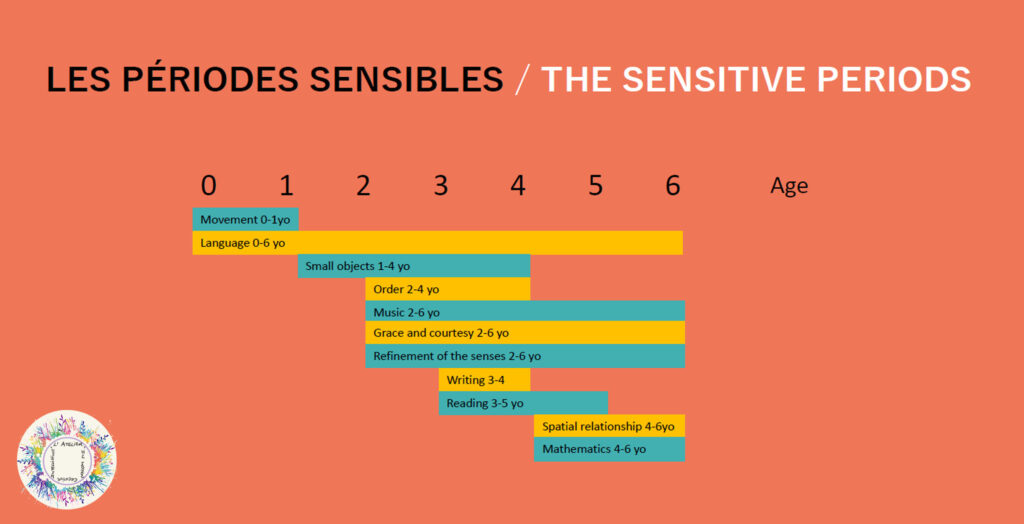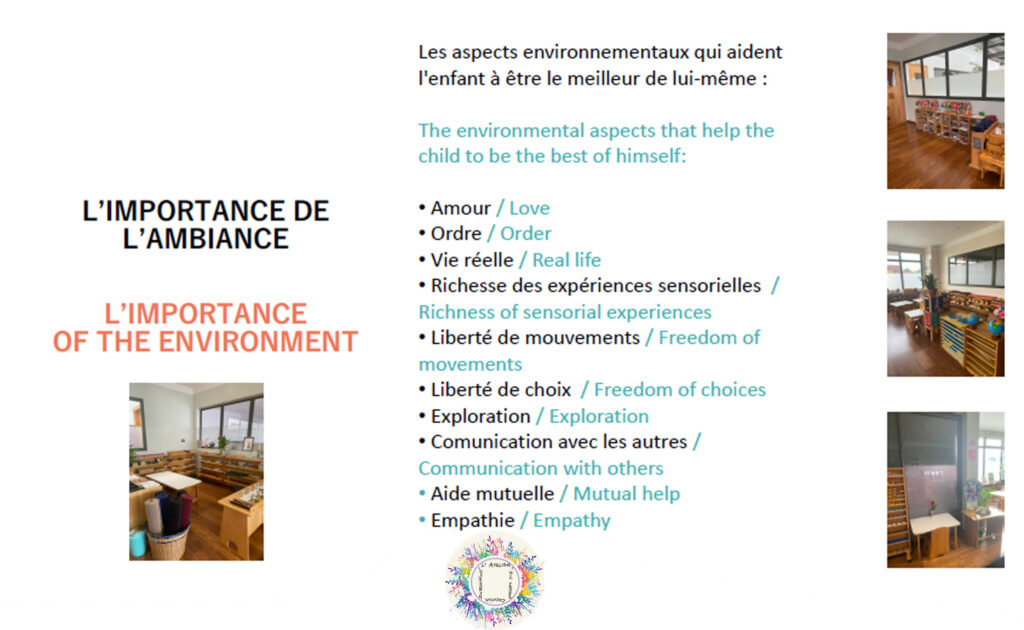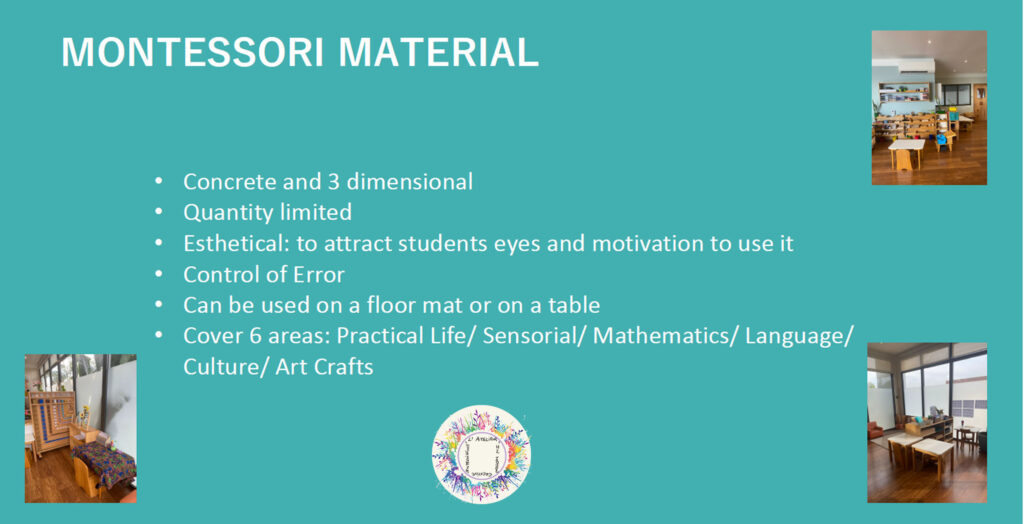“The education must be at the service of the inner life, for peace”
-Maria Montessori-
Maria Montessori was born on August 31, 1870, in Chiaravalle near Ancona in the Marches (Italy). She has dedicated her life to humans, to the study of improving human potential, studying the natural, physical and psychological development of children from birth.
Dr. Maria Montessori who after her medical studies has devoted her life to study children’s development. Her lifelong research allowed her to create a coherent pedagogical system answering to the ever-changing needs of children growing up.
Based on natural cycles of three years associated with the biological phenomenon (apparition of first teeth, loss of children teeth, growth sprouts), Montessori pedagogy adapts to children’s development from birth to adulthood.
Children don’t grow up in a linear fashion, their mind develops the same way. Maria Montessori identified “sensitive periods”, periods of time during which children are very keen on learning new skills. If vigilant, an educator can use these paths of least resistance to have children learning without effort, just feeding the child’s desire for specific knowledge and allowing time to practice and repeat what he is most interested in.
It did not feel like “studying” when the child learned how to walk, it was not an exterior force that compelled her/him to start talking in her/his mother tongue. Those came as a natural inner drive the child had and pushed her/him to acquire these skills. The same can be said with many essential building blocks of one’s development. If in a proper environment, where the child can fulfill her/his needs, these skills will be effortlessly acquired. Here are the sensitive periods identified for the 0 to 6 age range:

Observing children and identifying when a child enters a sensitive period is one of the most important tasks of Montessori Educators. Once it is the case, teachers need to be ready to guide the child towards activities that will help him fulfill his need.
These preliminary discoveries, confirmed by modern science through the use of IRM and brain scans (bursts of brain activity in different areas and neural growth through the early years) are guidelines for Montessori Educators when they create not only the material of the classroom but the whole Montessori environment.
The aesthetics of the environment is primordial.
Children need to feel safe and comfortable but also attracted by the environment and material. Real-world materials such as wood, glass, metal are much more used and valued in the adult world than plastic. Would you prefer dining on a plastic plate with, sipping your wine from a cup or use cristal glass and fine porcelain plate?
Children are very quick to identify what is considered beautiful and the domain of adults and what is “kids toys”. Being perceived as a person rather than as a “baby” can be a powerful thing. How can one expect a child to behave like a grown-up while limiting his world to the one of a “non-adult”?
Do you want to know another great thing about glass or porcelain? It breaks. Being careless or inattentive has consequences,3visible ones. Why should any child be cautious with an object if nothing may happen to it? Visible consequences help children apprehend concretely how the real world works.

Even without breaking, Montessori material is intended to allow for control of the error: take the pink tower, for example, this works helps build up the notion of order. One misplaced cube and the tower falls down. n this case, the error is obvious, consequences visible, and also very important, no adult or older child is required to help the learning child to understand something went wrong.
Mistakes and errors happen all the time, the important thing is not to get scared by them and to learn from them. Removing the look over one’s shoulder and the need to correct by another definitely helps with the pressure usually associated with the error. Faced with my “mistake” I can simply look for it and try to correct it.

This control of the error by the child frees the Montessori Educator to take a step back and do the most important part of their job: observe.
Objective observation of what children are doing, how they are interacting, towards which material do they show interest in is what allows Montessori educators to adapt to the development of the pace of each and every child they care for and to follow their interests as soon as they show up.
Montessori Educators are guides channeling children by providing the right environment and material at the right time. Their work is done with a light touch. Children’s minds are not vases to fill with knowledge but a strong flame of will to learn we need to preserve and feed appropriately until they can do it on their own.
The goal is ultimately the independence of the child and as Maria Montessori famously said :
“The greatest sign of succes fo a teacher is to be able to say – The Childen are now workingas if I did not exist”
